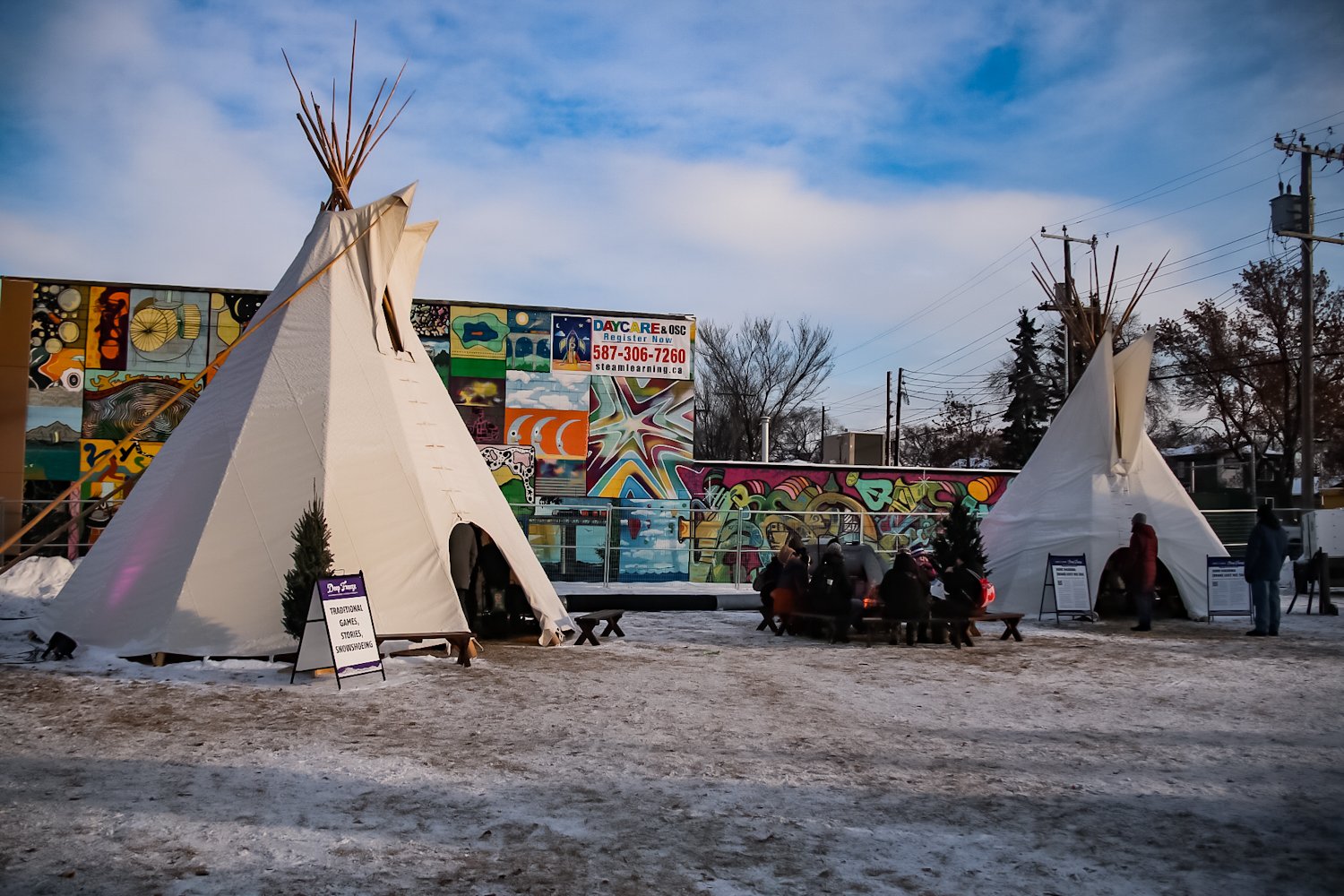
Ward Métis
Indigenous language of origin: Michif
Name Meaning: Given the history of the area and the use of the Riverlot system in this ward, a Métis name was chosen
Pronunciation: MAY-TEA
Name Explanation
The Métis people originated in the early 1700s when French and Scottish fur traders married Indigenous women, such as the Cree, and Anishinaabe (Ojibway). After a few generations, the descendants of these marriages formed a distinct culture, collective consciousness and nationhood in the northwest.
As the fur trade slowed, Métis people developed farms on river lots close to Fort Edmonton. The shape and position of these lots is a reflection of the city’s design. Because of their integral part in the formation of the city, this ward has been given the name Métis to honour a cornerstone in Edmonton’s history.
Choosing the Names
The naming process began in ceremony and took guidance in ceremony as the group determined it was needed.
During the process of deliberating over names, the committee members reached out to Elders and other members of their communities for guidance and input. The historical and cultural meaning of names is very important to the committee members, as it is their desire that each name should reflect Indigenous connections to the land in each ward.
iyiniw iskwewak wihtwawin
Indigenous Elders and urban Indigenous community members approached City Council to consider renaming Edmonton’s newly amended wards with Indigenous names. On June 16, 2020, Council directed the administration and the Naming Committee of Council to explore new Indigenous names and return in the fall.
Edmonton has been a gathering place for Indigenous Peoples for thousands of years. iyiniw iskwewak wihtwawin (the committee of Indigenous matriarchs) have gifted traditional names to the City’s naming committee to honour these sacred places in Edmonton and to preserve the history for future generations.
Led by women
Indigenous cultures traditionally uphold women as leaders in their communities, which is why they were chosen to lead this initiative. This is an opportunity for reconciliation for matriarchs to reclaim their roles within the community.
The committee is made up of 17 women from First Nations in Treaty No. 6, 7, 8, as well as Métis and Inuit representatives. They represent the Anishinaabe, Blackfoot, Cree, Dene, Inuit, Iroquois (Michel Band), Métis and Sioux nations.
